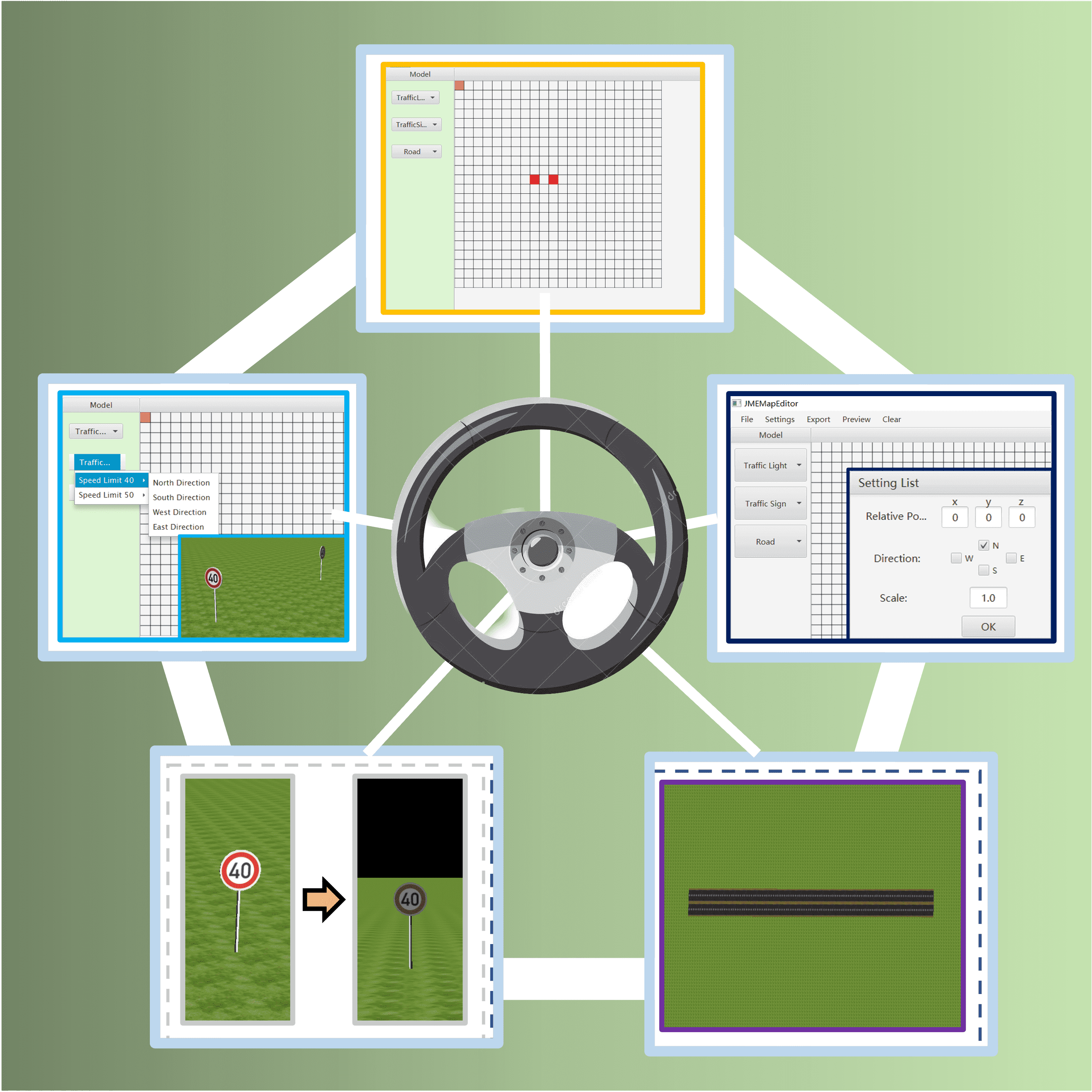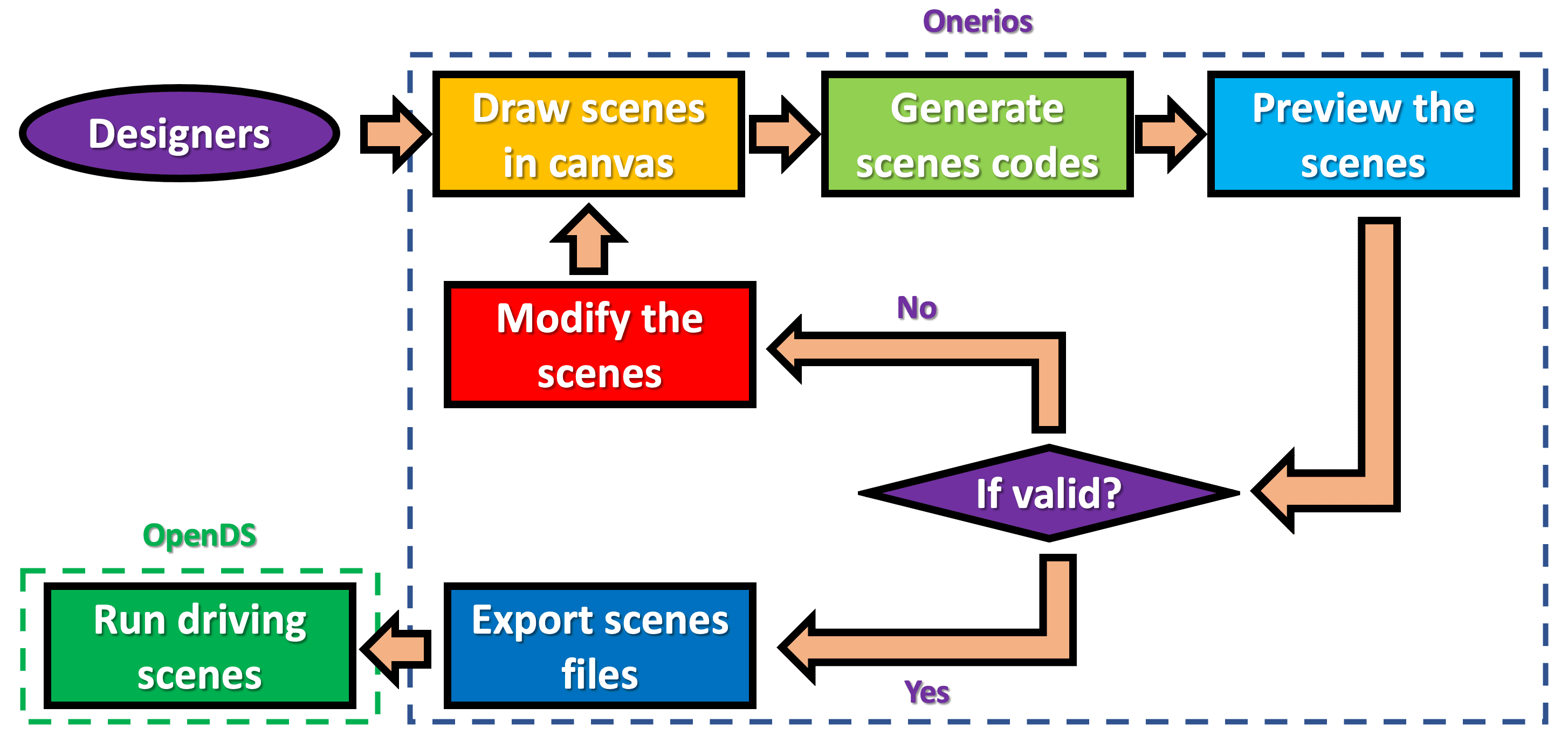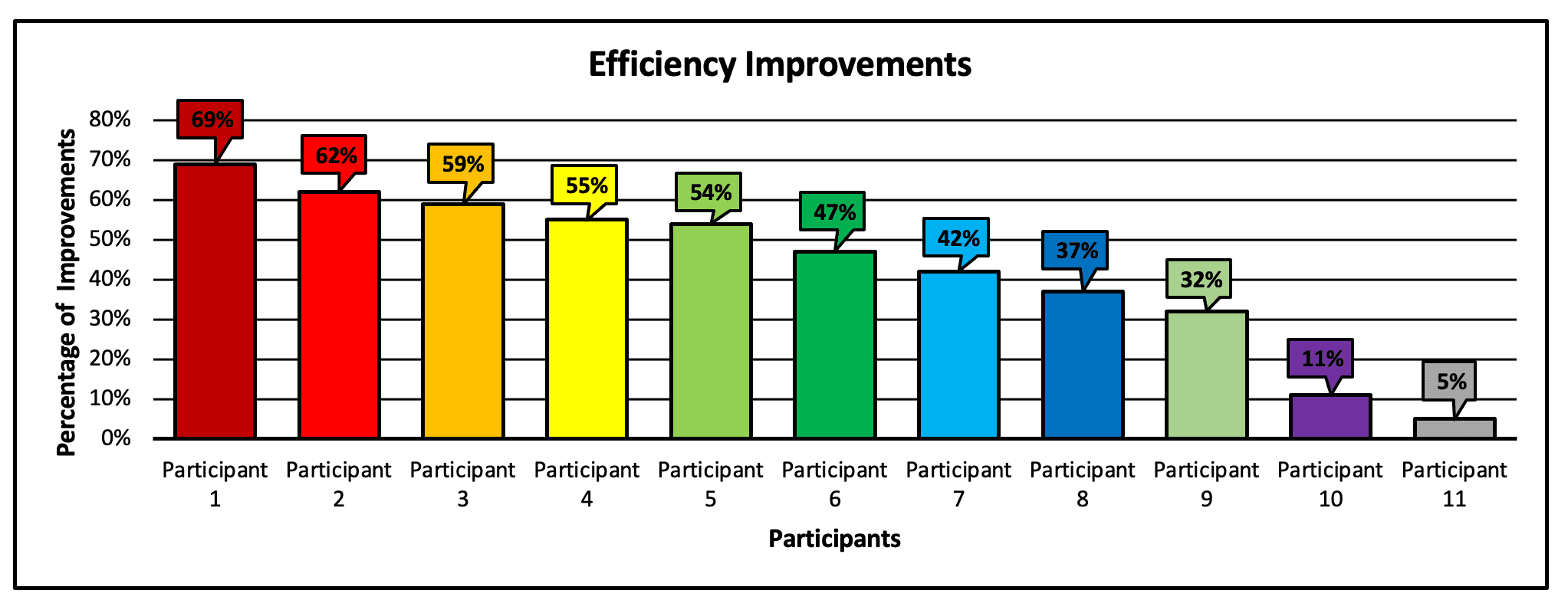
Oneiros: An Interactive and Extensible Toolkit for Agile and Automated Developments of Complicated Driving Scenes
Junyu Liu*, Shuolei Wang*, Haoxuan Sun, Xiaoxing Ming, Wangkai Jin, Zilin Song, Xiangjun Peng
Published in HCI 2022!
Human-Computer-Interaction
Motivation
Motivated by the inefficiency for the developments of complicated driving scenes, Oneiros aims to:
(1) Provide a toolkit for more efficient and agile developments of complicated driving scenes.
(2) Ensure designers can independently implement driving scenes via interactive toolkit.
Therefore: we derive two key requirements of such a toolkit:
(1) Preview Functions are needed to allow designers for introspection and rectifications of their designs.
(2) Graphical User Interfaces are need to ease designers for creation, adjustments and adaptions of different objects and factors.
Overview
Oneiros fulfill the domain knowledge gap between designers and programmers, and address the inefficiency during driving scene development. Below is a graph demonstrating the worklod in Oneiros.

User Study
We recruit 11 participants by advertising our study via internal emails, among all students (i.e. 36) involving driving-scene designs previously in our lab. The result is as follows:
Efficiency Improvements - in terms of Time

Firstly, there are 9 participants who save at least 32% time by using Oneiros, compared with the conventional approach. Secondly, 1 participant saves up to 69% time by using Oneiros. Third, 2 participants only save 5% and 11% time by Oneiros. This is because these two participants are cold-start in using Oneiros, without sufficient practices.
User Experiences - in terms of Functionality, Interactivity, and Convenience

For Functionality, 1 participant thinks the functionality of Oneiros tool is good enough, 7 participants think is good, and 3 participants think the functionality is neutral; for Interactivity, all participants consider Oneiros is much more interactive than the conventional approach: 9 of them particularly enjoy the interactivity of Oneiros; for Convenience, 4 participants think using Oneiros is much more convenient than the conventional approach, and 7 participants think Oneiros is more convenient.
Reference
Junyu Liu*, Shuolei Wang*, Haoxuan Sun, Xiaoxing Ming, Wangkai Jin, Zilin Song, and Xiangjun Peng. 2022. Oneiros-OpenDS: An Interactive and Extensible Toolkit for Agile and Automated Developments of Complicated Driving Scenes. In Proceedings of the 24th International Conference on Human-Computer Interactions (HCI’22).
* stands for equal contribution